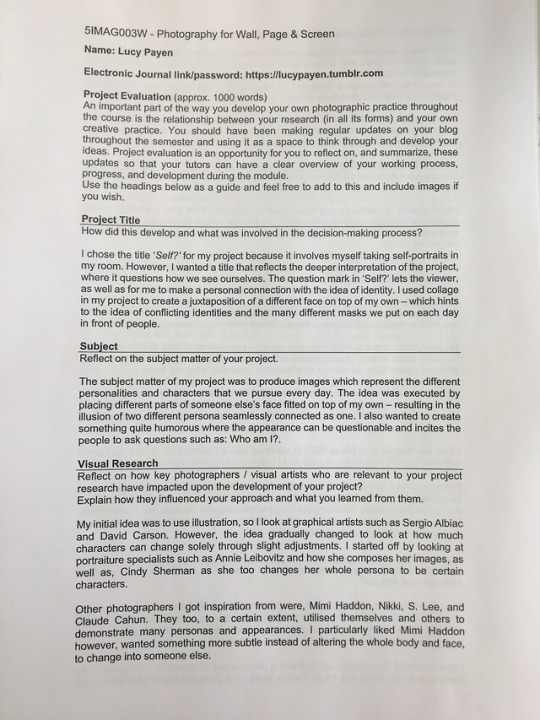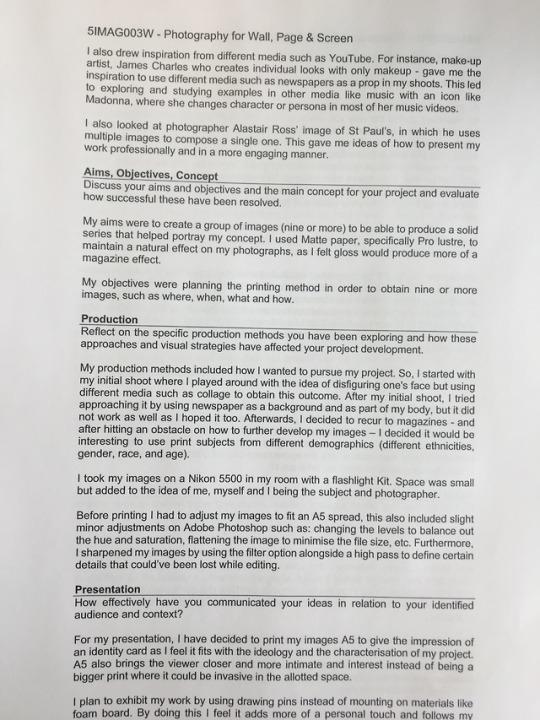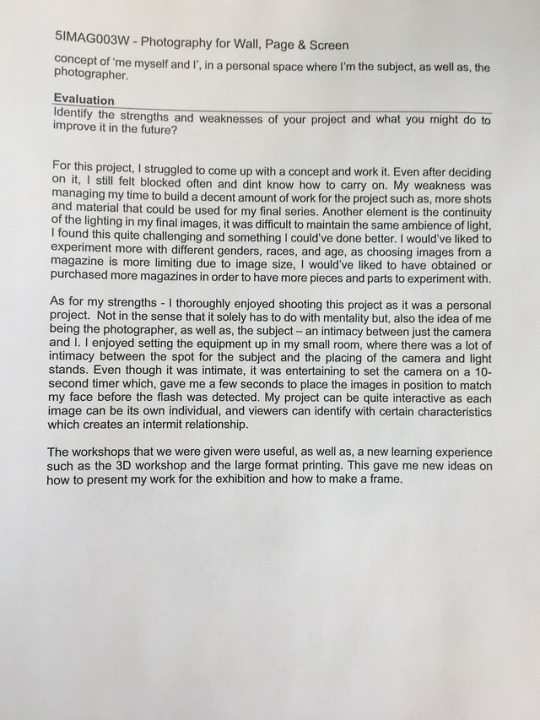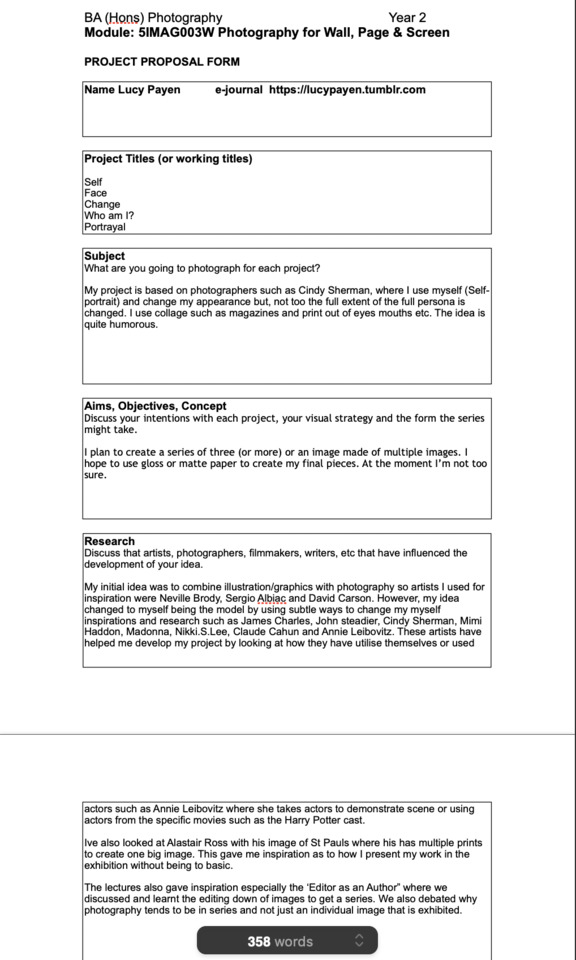#51MAG003W
Photo

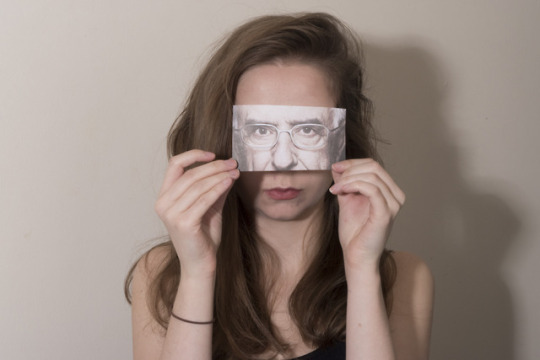
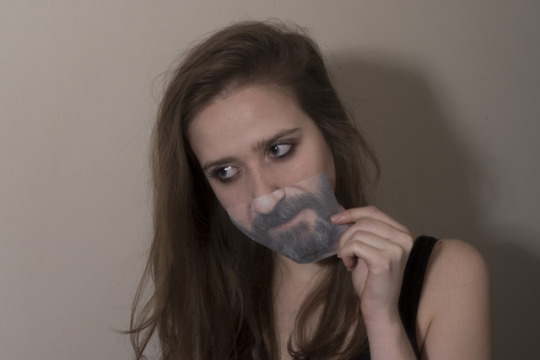
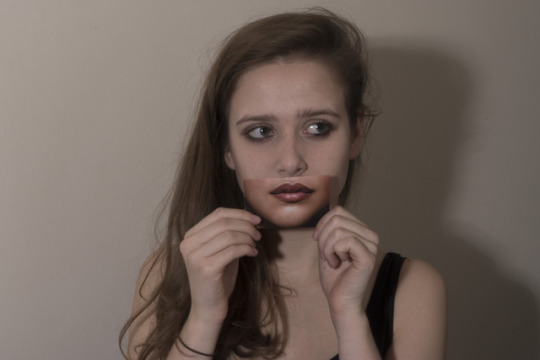



SHOOT #3
This is shoot represents the idea of wearing a mask every day to pursue different personalities and characterization. For my final exhibition, I plan to print A5 to give the impression of an identity card.
Also, printing A5 brings the viewer closer and more intimate and interest instead of being a bigger print where it could be invasive in the space.
1 note
·
View note
Text
The origins of handbags
30.4.20
A handbag or pause is used to carry around your personal items. A pause was originally for holding coins, and was called a money bag. A ‘handbag’, was developed to hold large and more items. The term handbag began to appear in the early 1900s, and originally it was most referred to men’s hand- luggage. Women’s bags grew larger and more complex during this time and was classed as an accessory ‘pocketbook’, was another name for a women’s handbag in the mid twentieth century. Originally bags/pauses were for the purpose of carrying coins and were made of soft fabric or leather and were used by men as much as women. In the 17th century young girls were taught embroidery which encouraged them to make beautiful bags.

Women wanted purses that were not bulky or untidy in their appearance and that’s when bags began to be designed in fine fabrics such as silk and velvet which were carried by a wrist strap, the trend started in France and the became popular in Britain.

Men did not take on this trend and began to use small coin purses, this is Also the time that pockets started to be made into men’s trousers. The modern purse, clutch, pouch or handbag arrived during the industrial revolution in England partly as the result of increased travel with thr railways.
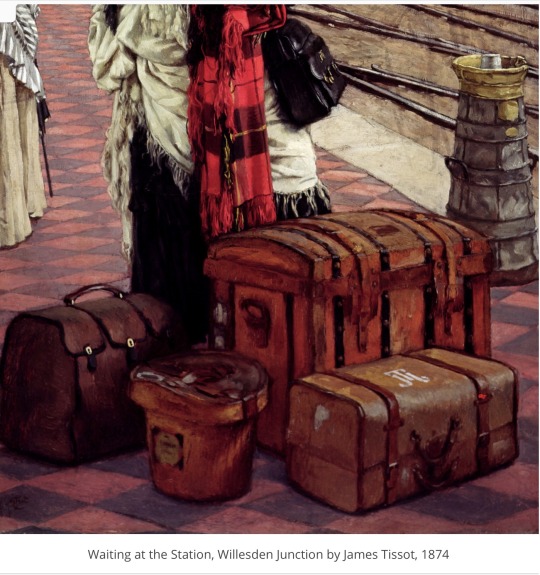


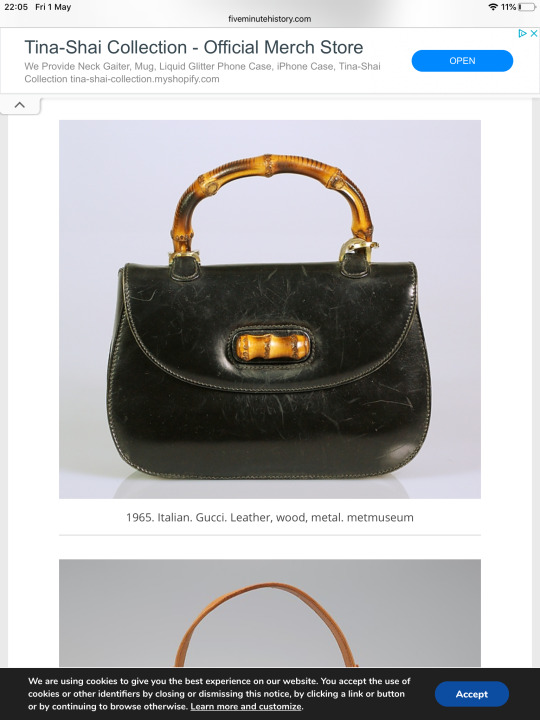
1 note
·
View note
Photo
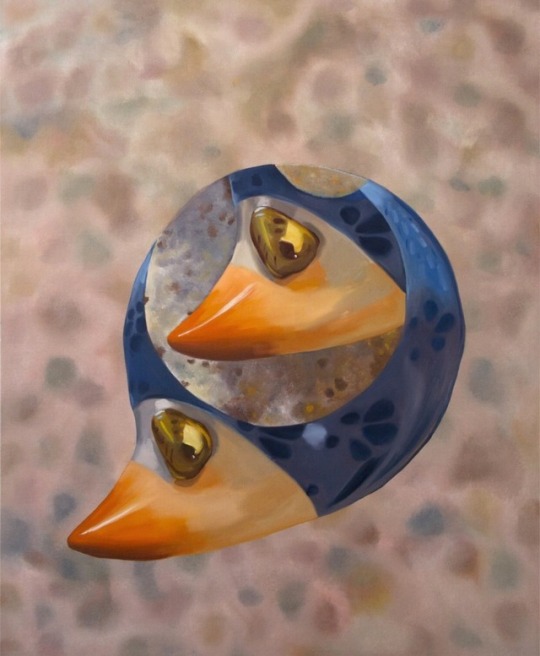
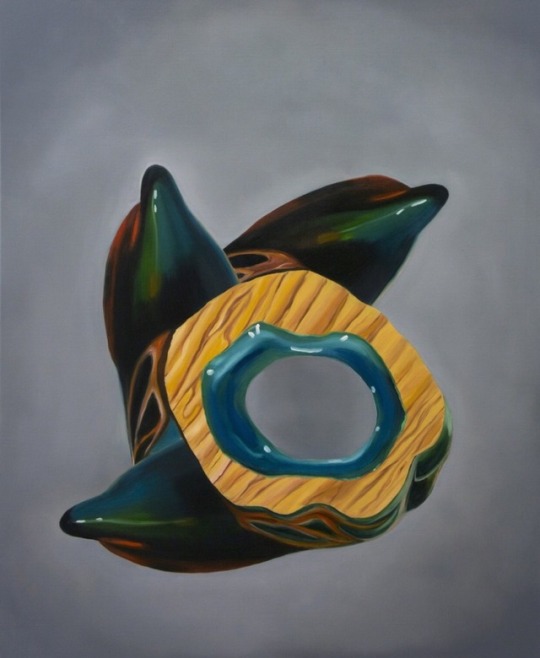

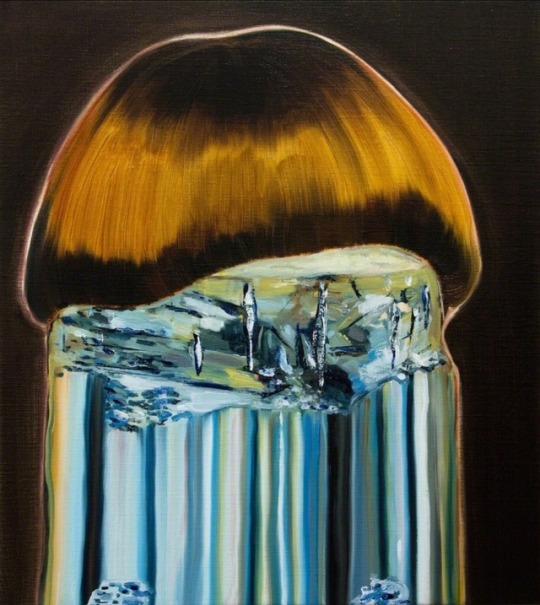


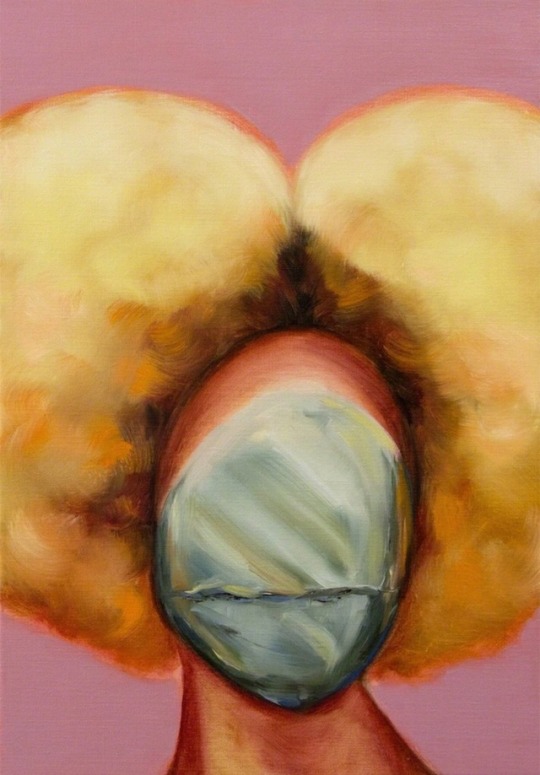


Paintings by Sally Kindberg
Sally Kindberg is an artist and author who runs drawing workshops for both children and adults, Her painting is abstract and creative that gives audience a really strong sense of mysterious feeling, she integrate surrealism into traditional painting method, using human face/head as an main part to do creative illustration.
Her painting gives me an inspiration in illustration and color art which i could do photography experiments based on that and develop it further as a method.
what inspires Sally Kindberg?
Sally Kindberg is an illustrator and writer, who uses comic strip frames as ‘little theatres’ and is drawn towards dark humour and velvety black ink. She lives in London, has one daughter and many robots.
What inspires you?
Comics, journeys, bits of obscure information.
Did you always draw?
I started making notebooks when I was about 9, cut out bits from comics, drew stories, stuck in sweetie labels etc. I didn’t start reading till I was 8. My eyesight was very bad, and my mum didn’t want me to wear glasses, so she tried prayer which didn’t quite work. Luckily one of my teachers had a word with her, and National Health specs did the trick.
What did you read?
The first book was Grimm’s Fairy Tales – terrifying and wonderful. Reading seemed like magic to me, and still does.
What attracted you to drawing comics?
Early influences were Beano and Dandy – Desperate Dan’s creator Dudley D. Watkins was a marvellous illustrator.
I love the way you can give anyone or anything a voice by using speech bubbles, use the frames as little theatres full of surprises, and the way cropping and scale can be almost cinematic. Visual humour is most important too of course.
Who are your favourite comic book artists?
There are loads of them! Matt Groening, Yuichi Yokoyama, Marjane Satrapi, Art Spiegelman, Jochen Gerner, Roz Chast, and many more. And especially those with very dark humour like Mark Beyer.
I like pictures which are punchy black and white, there’s something exciting about velvety black ink.
Do comics get a bad press?
I think in the past they did – they weren’t taken seriously. Some writers I know kind of looked down on graphic novels/comic strips because they use pictures, which is crazy because some of them combine words and images in an incredibly powerful way, and it’s not always easy getting them to work together.
Graphic novels are viewed differently now, they get much more respect (I hope).
What was your lucky break?
During my second year at art college in the Midlands we were encouraged to get work experience, so I came to London and very nervously took a folder of illustrations round to a magazine called New Society.
I got my first commission, for a little black and white drawing which earned me £5 – it felt amazing. Then I worked for Honey Magazine.
What quality do you need as a freelance?
Getting work before I left college made me feel I might do anything – not strictly true of course – but you need to be pretty optimistic and determined to work as a freelance.
Ever been tempted to write?
Much later when I was drawing regularly for the Independent, illustrating travel features, possibly a bit cheekily I thought, why not write the features myself?
I worked as a freelance travel writer for various newspapers for a few years, and had some fascinating trips – including going to Elf School in Iceland, investigating horse-racing in Newmarket, and sailing on a Tall Ship to Lisbon.
What’s happening at the moment?
I’ve been collaborating with author Tracey Turner on a series of comic strip books for Bloomsbury which is great fun. I’m drawing pictures for the next one, which will be our third.
I’m also running comic strip workshops in libraries for children, developing other comic strip ideas and occasionally writing interview features.
Have you had rejections from publishers/agents?
Yes, of course! If they make constructive criticisms then I respect them, if not then I think, how dare they, it’s their loss etc… and wipe the tears off my glasses.
2 notes
·
View notes
Text
Still Life
11.2.20
For the second part of the constructed photograph I have decided that I will be using still life. As we are using colour film I wanted to have control over my subject. One of the advantages of still life is the freedom to arrange the subjects in any way that i would like, which allows me to work on the emphasis of lighting, angles, framing and composition, without worry, I can even leave it for a break and come back to it. Still life is a great way to experiment and change things easily when I am not happy with my arrangement.
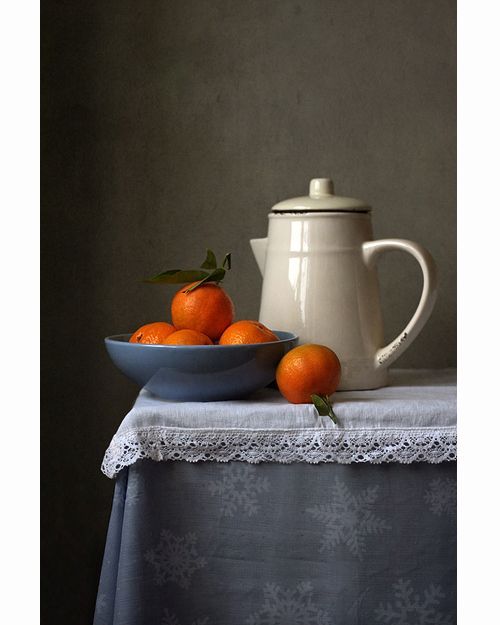


The thing that makes still life a special way to photograph is that most of the time the things that are being photographed are really not that interesting and of things that are not usually paid any attention too.This is what makes it also such an attractive challenge, I will need to find unique ways to breath life into the photograph to make my simple objects worth looking at and interesting to be successful.




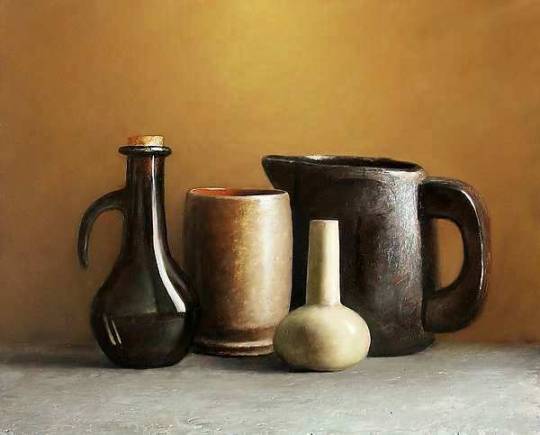

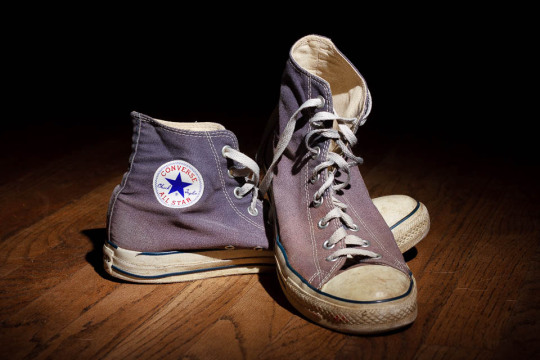
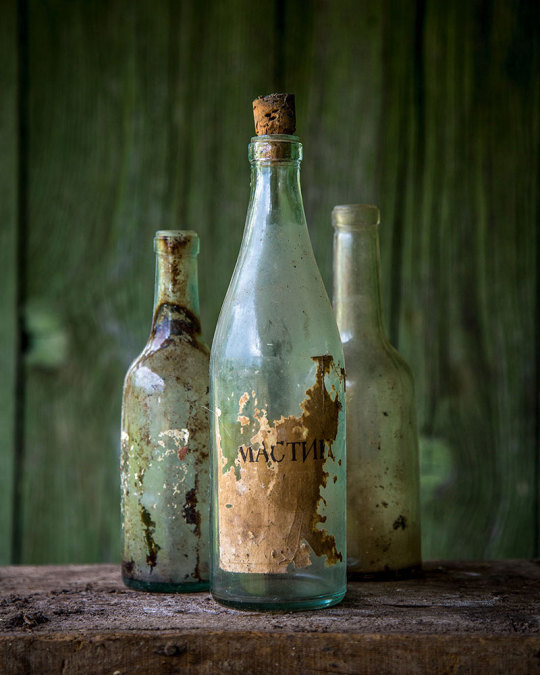

All of these examples are very simple objects, but by skillful Lighting and artist arrangements they are turned in images that require a second look. I have yet to decide what my subject and angle will be, but I am working on it.
0 notes
Text
lecture : Photo Book
The Photo book , A Renaissance.
This lecture was discussing how the experience of photography online has made artists & photographers much more aware of the book as an object. the lecture was mainly understanding photo books and the form and content. I feel as though this lecture helped me greatly, because i have now be able to piece together what i think would be great to show in my own photo book and now i am able to understand more the pattern that i would want my own photo book to have. Also now that we are living in a world which is based around technology photo books have become more popular. Although some people may argue that due to the fact that the world we are living in is based on technology and everything is digitalised photo books are becoming less relevant.
0 notes
Photo
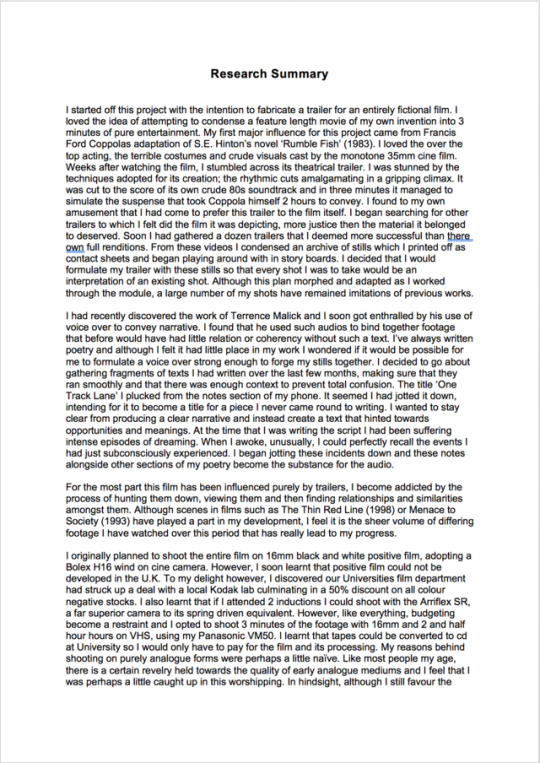

Research Summary
0 notes
Photo
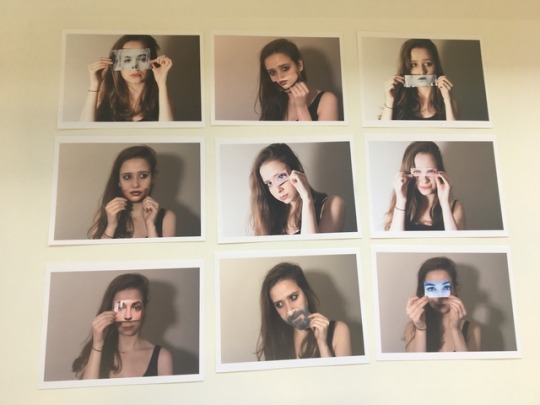
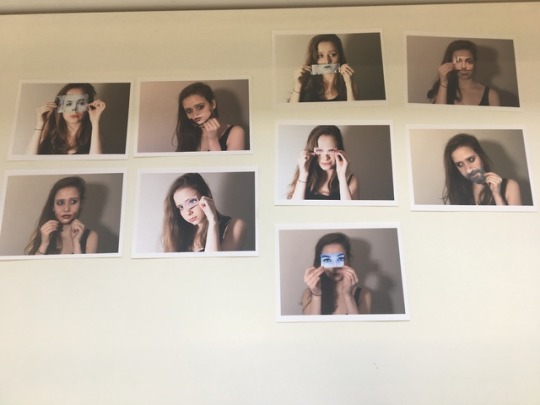
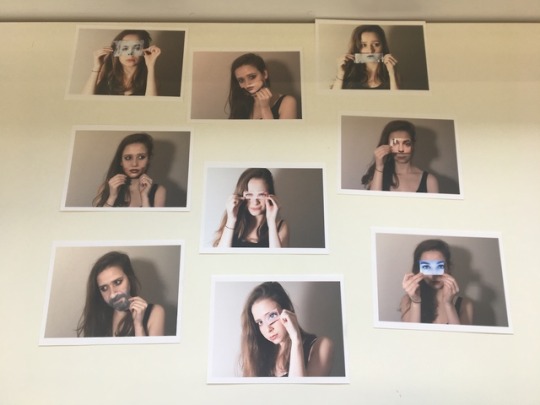

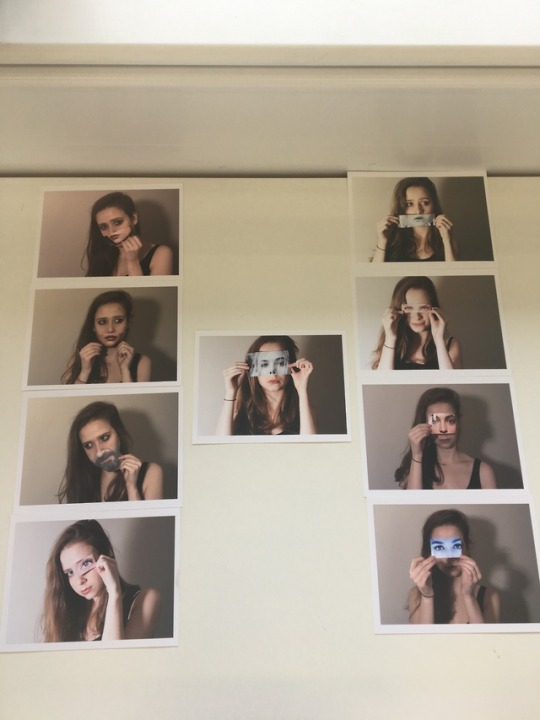
FINAL IDEAS FOR PROJECT LAYOUT
0 notes
Photo

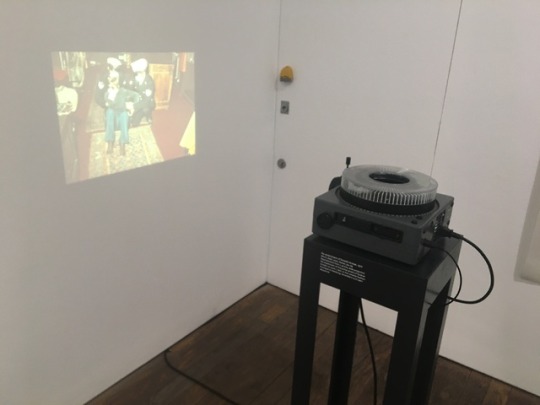

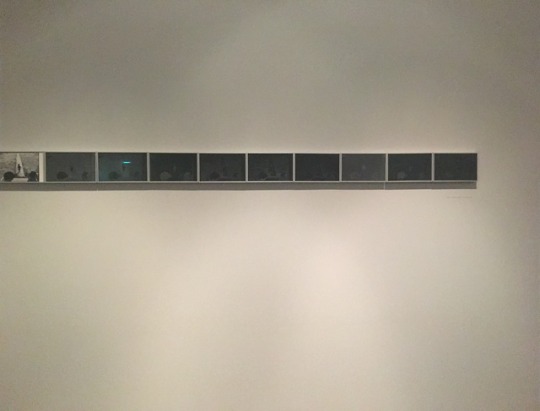

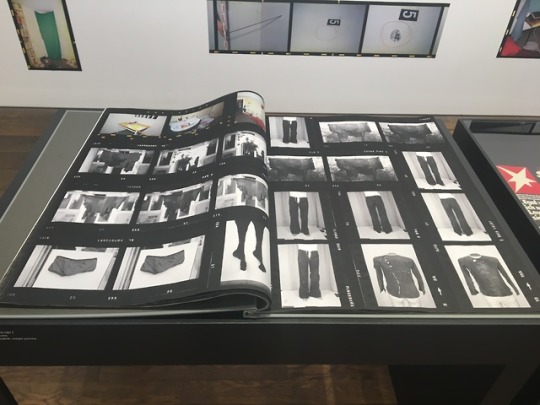

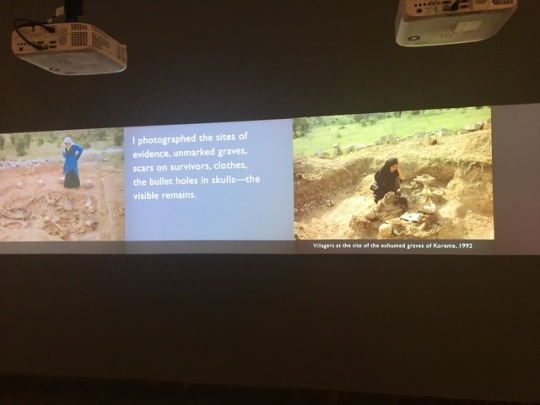

Photographers Gallery:
The Photographers gallery a bit like the National portrait gallery has a contemporary with modern white walls.
The exhibitions being held were allowing the work to flow coherently, I specifically like how they used the floor space as well as the wall. But using different media such as projections with film and graphical art.
This gave me inspiration especially the work using the map and how to portray the identity.
0 notes
Photo






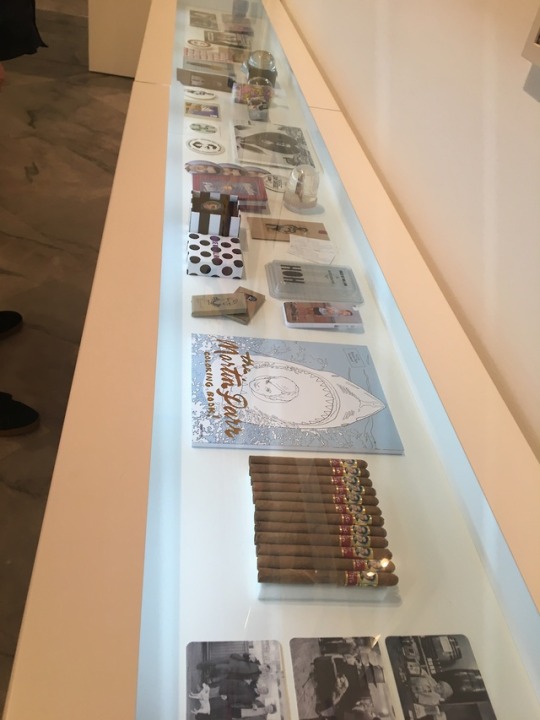
National Portrait Gallery:
The national portrait Gallery has more of a contemporary feel compared to the traditional notional gallery.
The photographs were often portrayed with a basic a frame however I came across works that were displayed with artwork on the wall and information and more items in a glass cabinet placed below. Another piece of artwork was more graphical like which was presented with a lightbox.
These put into perspective if wanted images placed on the wall with information or my own items placed in front, or whether I could create a lightbox to project my images from.
0 notes
Photo


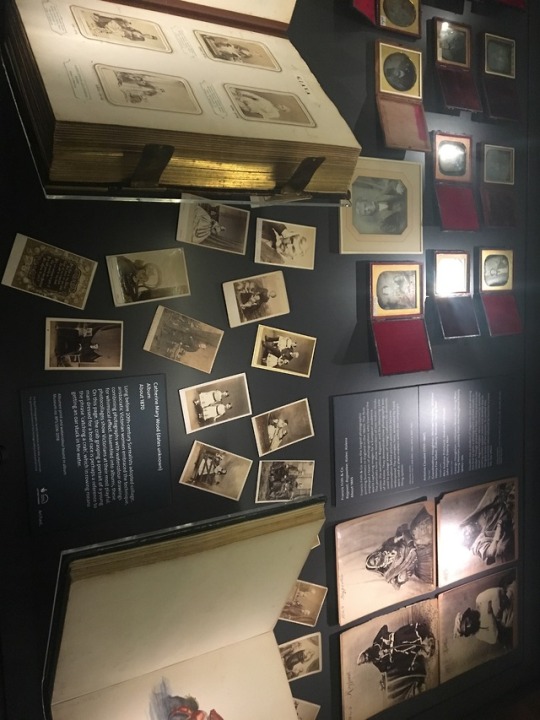

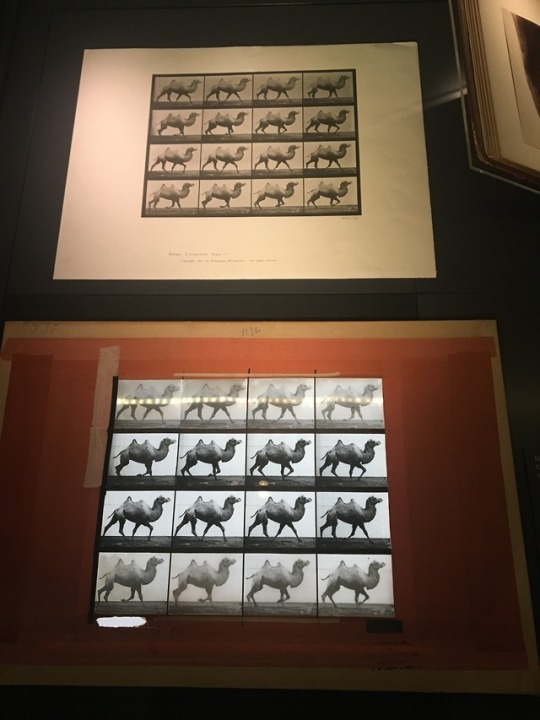



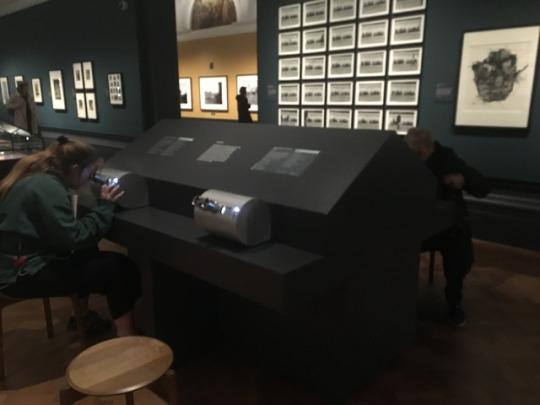
Victoria and Albert Museum:
The Victoria and Albert Museum had a minimal exhibition, however, what they showed was more of an archival exhibited with historical names such as Henry Fox Talbot and the Daguerreotype.
The space was used to its advantage however gave the impression of an archive rather than an exhibition, the lighting was very dim and each individual photograph had a spotlight.
The history was very appealing but for my own exhibition display, the walls and lighting will be bright. however, for future projects, I like the idea of creating a project where the display would be like an archive rather than a modern interpretation.
0 notes
Photo
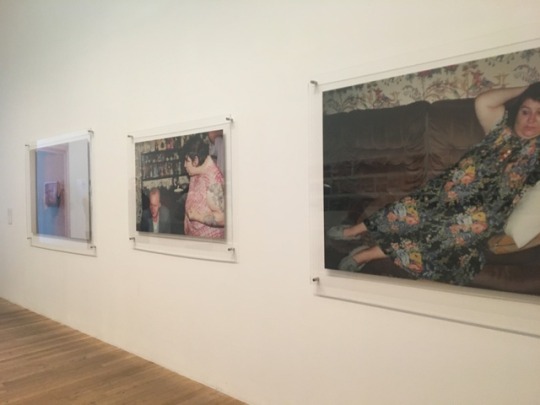

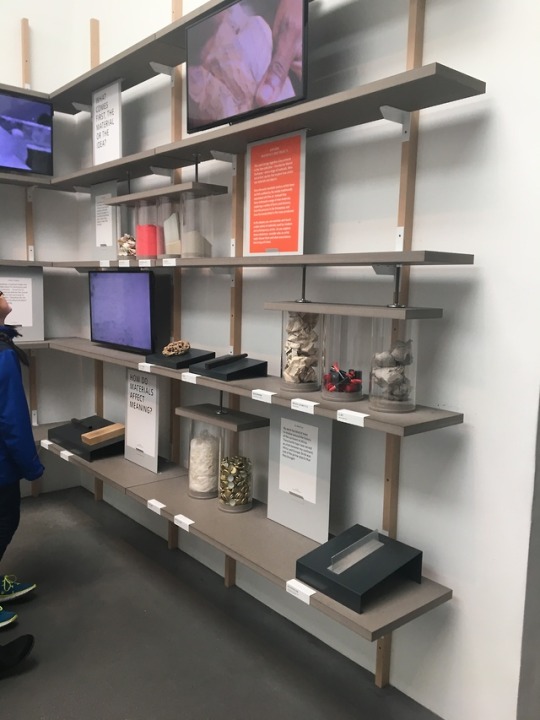
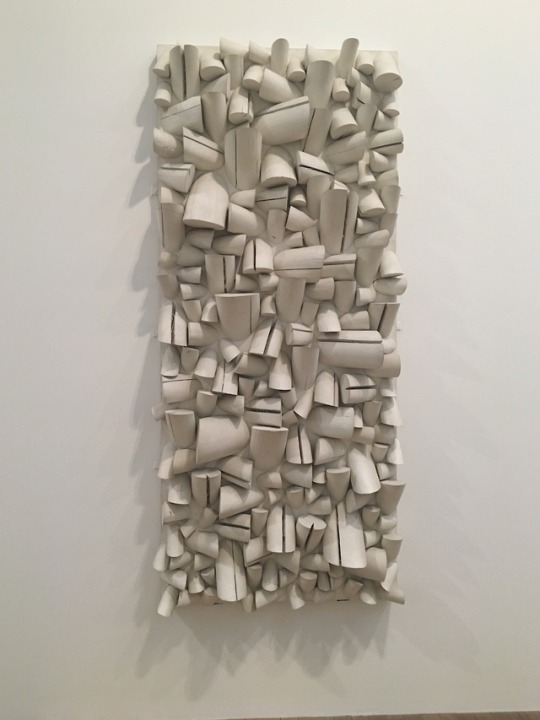


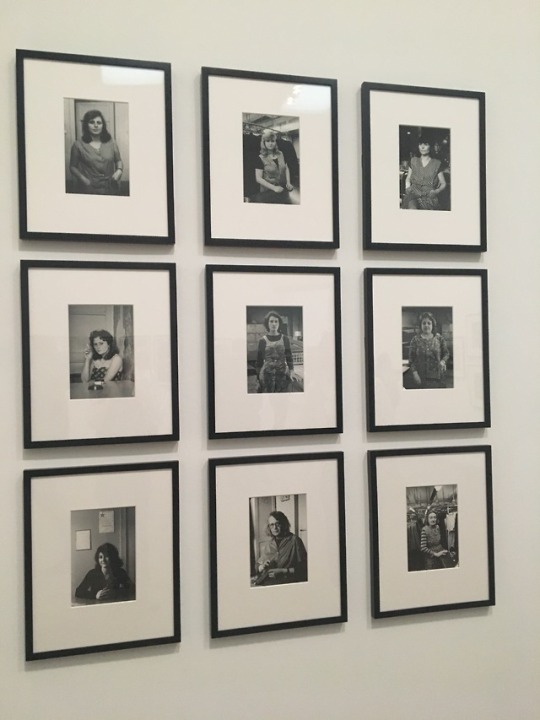

Tate Modern:
The Tate modern showed some interesting concepts of representing my own work. Specifically the idea of using personal belongings and arranging them in cabinets, each individual cabinet tells a story.
With the Tate, I like how they use their space accordingly so every space has value, for example, Yinka Shonibare CBE and how the walls are layers upon layers of books.
These gave me inspiration for how I could use this in my own exhibition space and make use of wall usage.
0 notes
Photo
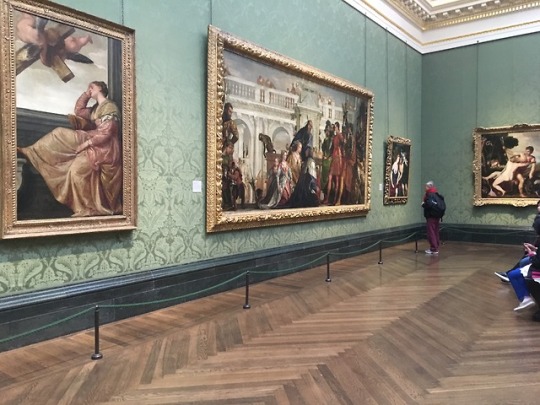
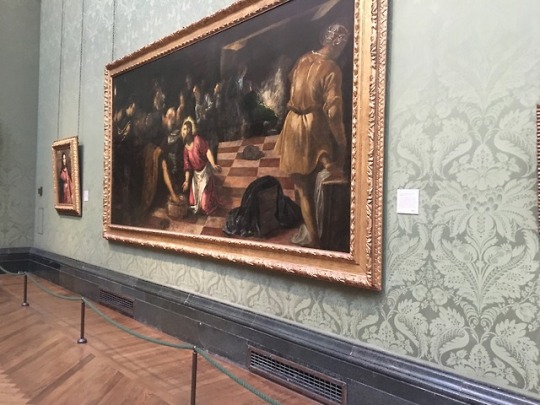

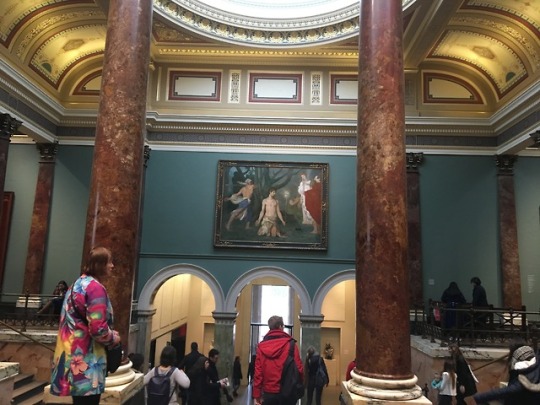

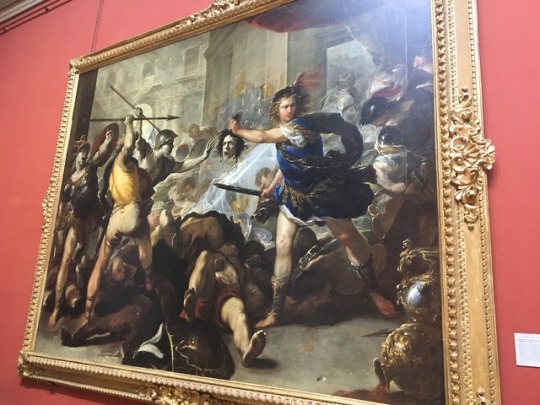



National Portrait Gallery:
I visited the National Portrait Gallery to see how they portray the images in a big spacial area. This gave me ideas of framing and the sizes of my images.
As the rooms are bigger than the exhibition hall we will use it gives an idea of spatial awareness and how the image size will have an impact on the viewers.
0 notes
Text
Gillian Wearing

Gillian Wearing is a contemporary artist who captures the dynamics and voyeurism of everyday life. She focuses on the awareness of the subject/object rather than the issue or aesthetics. She is well known for her individual, group and self portraits. especially with her project Signs that Say What You Want Them To Say and Not Signs that Say What Someone Else Wants You To Say (1992-1993). This project contained confronting strangers on there thoughts which then led to Wearing capturing holding their thoughts on a sign. This project although not similar to mine she introduces the idea of self portrait and the idea of characterisation. Gillian Wearing also creates self portraits, where she creates a mask and portrays different characters.
With my own portrait I'm creating something similar however, instead of using awhile mask I use parts of the face to create an illusion. Gillian Wearing uses characterisation in her work which is what I plan to carry forward.

0 notes
